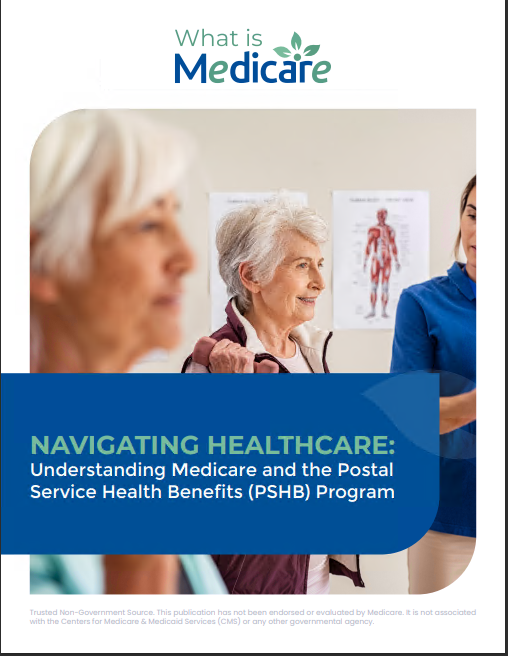Key Takeaways
- Understanding Medicare’s four parts—A, B, C, and D—is essential for choosing the right coverage and avoiding unexpected costs.
- Each Medicare part covers different services, making it crucial to know how they work together to meet healthcare needs.
Here’s What Medicare’s Parts A, B, C, and D Really Do—And Why You Should Care
Medicare is the cornerstone of health coverage for millions of Americans, yet its different parts can be confusing. With the rise of healthcare costs, especially in 2024, having a clear understanding of Medicare’s four parts—A, B, C, and D—is more crucial than ever. Each part covers distinct aspects of healthcare, and knowing how they fit together can help individuals maximize their coverage and avoid costly surprises.
Medicare Part A: Your Hospital Coverage
Medicare Part A, often called hospital insurance, covers inpatient hospital stays, care in skilled nursing facilities, hospice care, and limited home health care services. This part is largely premium-free for most people, provided they have worked and paid Medicare taxes for at least 10 years. However, it’s important to remember that although Part A covers major hospital-related expenses, it doesn’t cover everything.
What Does Medicare Part A Cover?
Medicare Part A primarily covers:
- Inpatient hospital care
- Care in a skilled nursing facility (not to be confused with long-term care)
- Hospice care for terminally ill patients
- Some home health services
While this part may seem straightforward, many people overlook that Medicare Part A comes with out-of-pocket costs, such as deductibles and co-payments. For 2024, these costs have increased slightly, and beneficiaries should be aware of their specific obligations before an unexpected hospital stay occurs.
Why Should You Care About Part A?
Without Part A, the cost of a hospital stay could be devastating. For example, the average cost of a hospital stay in the U.S. is upwards of $10,000, depending on the severity of the treatment. Medicare Part A helps significantly reduce this burden by covering the bulk of these costs, though beneficiaries must still pay their share in deductibles and coinsurance.
Medicare Part B: Your Medical Coverage
Medicare Part B is medical insurance and covers outpatient services, doctor visits, preventive services, and some home health care. This part is crucial for managing everyday medical care outside the hospital, covering everything from routine check-ups to specialist visits.
What Does Medicare Part B Cover?
Medicare Part B covers:
- Physician services
- Outpatient hospital services
- Durable medical equipment (like wheelchairs and oxygen)
- Preventive services such as flu shots and screenings
However, unlike Part A, Medicare Part B requires a monthly premium. In 2024, the standard premium has increased slightly, with higher earners paying more due to income-adjusted premiums. In addition to the premium, there are annual deductibles and coinsurance that individuals need to consider.
Why Should You Care About Part B?
Medicare Part B is essential for anyone who regularly sees doctors or specialists. Without it, even routine visits could become financially overwhelming. For example, a simple office visit to a specialist can cost several hundred dollars, but with Medicare Part B, individuals typically only pay 20% of the Medicare-approved amount after the deductible is met.
Medicare Part C: Medicare Advantage
Medicare Part C, also known as Medicare Advantage, offers an alternative to traditional Medicare (Parts A and B). Offered by private insurance companies approved by Medicare, these plans must cover everything Original Medicare does, but they often come with additional benefits like vision, dental, and hearing coverage. In some cases, they also include Part D drug coverage.
What Are the Benefits of Medicare Part C?
Medicare Advantage plans often offer:
- Additional benefits beyond Original Medicare
- Out-of-pocket maximum limits (unlike Original Medicare)
- Integrated Part D prescription drug coverage
- Extra wellness benefits like gym memberships
Part C plans can vary widely depending on the provider, making it crucial to evaluate all available options during the annual open enrollment period. Unlike Original Medicare, Part C plans usually operate through managed care models like HMOs and PPOs, which can limit the choice of doctors and hospitals but may offer lower costs for those who remain in-network.
Why Should You Care About Part C?
Medicare Part C is ideal for individuals looking for an all-in-one plan that offers additional benefits. For those seeking comprehensive coverage with caps on out-of-pocket spending, Medicare Advantage plans can be an appealing choice. However, it’s important to weigh the trade-offs, such as network restrictions, and consider whether you need the extra benefits these plans provide.
Medicare Part D: Prescription Drug Coverage
Medicare Part D is prescription drug coverage designed to help with the costs of medications. Whether enrolled in Original Medicare or a Medicare Advantage plan, Part D is essential for managing the rising cost of prescription drugs, which continues to increase in 2024.
What Does Medicare Part D Cover?
Medicare Part D covers:
- Most prescription drugs needed for various medical conditions
- Medications that aren’t covered under Medicare Part B
- Preventive vaccines
Each Medicare Part D plan has a formulary (a list of covered drugs) that is organized into tiers, with different levels of cost-sharing. Understanding a plan’s formulary is essential to minimizing out-of-pocket drug costs. Keep in mind, however, that Part D does come with premiums, deductibles, and copayments, which can vary significantly by plan.
Why Should You Care About Part D?
Prescription drug costs can add up quickly, especially for individuals managing chronic conditions. Medicare Part D helps to limit these expenses by covering a wide range of medications. With healthcare costs continuing to rise in 2024, having a robust drug plan in place can save beneficiaries thousands of dollars annually, especially for high-cost medications.
How Do Medicare Parts A, B, C, and D Work Together?
One of the biggest challenges for Medicare beneficiaries is understanding how these four parts work together. Medicare Parts A and B cover the foundation of hospital and medical services, while Part C offers a bundled alternative with extra perks, and Part D provides essential prescription drug coverage.
While many beneficiaries automatically qualify for Parts A and B, deciding whether to enroll in a Part C or Part D plan depends on individual healthcare needs and budget considerations. The key is to assess your healthcare situation holistically—considering how often you visit doctors, your need for specialized care, and your prescription drug requirements—to choose the right combination of Medicare coverage.
What Happens If You Don’t Enroll On Time?
Another critical consideration is timing. Missing enrollment periods for Medicare Parts A, B, C, or D can result in late enrollment penalties. For example, if you don’t sign up for Part B when you’re first eligible, you may face a penalty that lasts as long as you have Medicare, significantly increasing your healthcare costs. Similarly, enrolling late in Part D could result in a lifelong penalty on your premiums.
Why Should You Care About Enrollment Penalties?
Medicare’s late enrollment penalties are designed to encourage timely enrollment, but they can have a lasting impact on your healthcare expenses. Understanding the key deadlines—like your initial enrollment period and special enrollment periods—is essential to avoiding these penalties and ensuring seamless coverage.
What Changes Came in 2024?
As healthcare costs rise and Medicare adjusts to inflation and new policy changes, understanding Medicare’s complexities is more important than ever. In 2024, premiums for Parts B and D have seen modest increases, and out-of-pocket limits for Medicare Advantage plans have also been adjusted. Beneficiaries should also be aware of changes to formularies in Part D plans, which could affect the availability and cost of certain medications.
Why Should You Care About 2024 Updates?
Staying updated on changes to Medicare ensures that beneficiaries get the most from their coverage. Whether it’s a change in out-of-pocket costs or updates to what medications are covered under Part D, being proactive can save both time and money.
Make the Most of Medicare in 2024
Navigating Medicare’s Parts A, B, C, and D can be overwhelming, but understanding the basics is the first step toward optimizing your healthcare coverage. As healthcare costs continue to climb, knowing how to choose the right Medicare options can significantly impact your finances and well-being.







